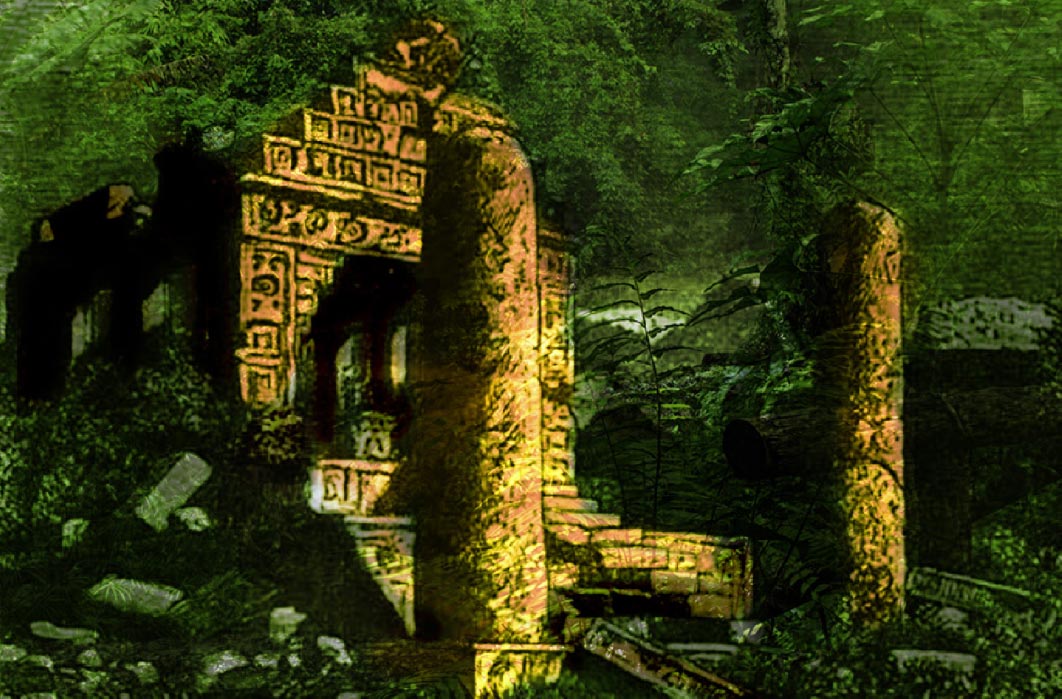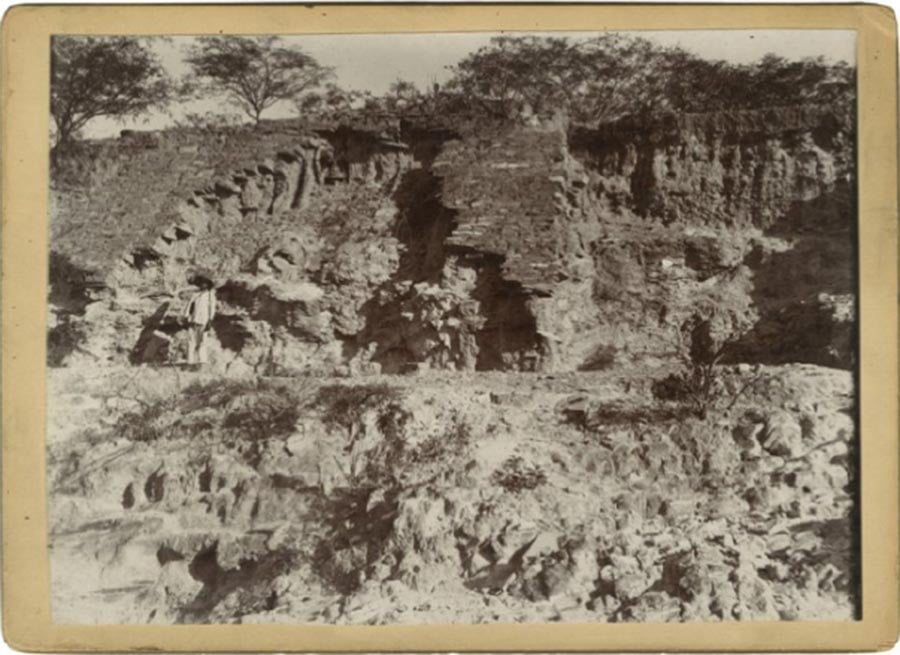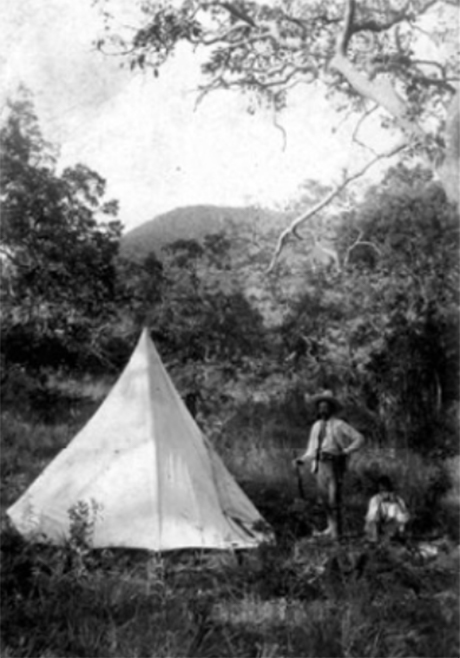
Omitlàn: In Search of a Lost City in Mesoamerica
In 1891, the American geologist and antiquarian William Niven set off on a journey of discovery and exploration through the Mexican state of Guerrero. What he found would change the course of his life forever. He did not just discover a lost city, but the evidence of a civilization that thrived in the unexplored highlands of Guerrero long before the time of the Aztecs, the Maya and the Olmecs.

One of very few pictures of the ruins discovered by Niven at Omitlán shows a large temple platform built of small carved stone blocks (note person in the foreground for scale) Mediateca INAH
Into Unknown Guerrero
William Niven was a curious figure of amateur archaeologist, geologist and antiquarian, who would later become associated with James Churchward’s Lost Continent of Mu by way of his discovery at Azcapotzalco of hundreds of inscribed clay and stone tablets apparently vindicating Churchward’s theories.
Long before the Azcapotzalco controversy, in 1890, a then 40-year old William Niven had just landed in Mexico in search of mineral specimens for his American clients. It was during one such trip to Chilpancingo, the capital city of the state of Guerrero, that he had the first glimpse of the archaeological treasures that would become his lifetime obsession. While in the house of Governor Francisco Arce, Niven was shown a large collection of antiquities, including clay figurines, ornaments and stone sculptures of a type he had never encountered before. Inquiring about the provenance of these mysterious objects, Niven was told that they came from a large ruined city near the village of Xochipala, 20 miles Northwest of Chilpancingo. Hoping that Niven could recover even more valuable artifacts from the ruins, the Governor agreed to provide Niven with an escort of four expert guides and mules to explore the course of the Balsas River.

A picture of Niven’s camp in the ruins of Omitlán, about 1897 Mediateca INAH
Discovering Omitlàn
In the summer of 1891, Niven finally reached the village of Xochipala, where he gathered more stories of the ancient ruined city said to exist somewhere in the unexplored Sierras to the west of town. It was said to no white man had ever set foot among the ruins; for the city was guarded by spirits and strange lights could be seen at night on top of the hills. Moreover, the city was said to contain great riches. The name of the ancient city was Omitlán or Quechomictlipán, but the locals called it Yerbabuena, after an herb (mint) that grew there in abundance.
The first evidence of the city, Niven recalled, was a narrow white band of what he thought was a simple streak of limestone on one side of the Zumpango barranca, a foot thick (30 centimeters) by about 1,000 feet (304.8 meters) long. Upon closer examination, the band turned out to be a layer of white bones – a veritable ‘vein of death’ formed by countless centuries of seasonal rains and flooding sweeping through some prehistoric necropolis; for mixed with the bones were innumerable jade objects and broken ceramic artifacts.
- Gene Flow and Counter Current—Hopi Sea Voyages From the Lost Continent of Mu
- The Lost City of Aztlan – Legendary Homeland of the Aztecs
- Hidden in the Glyphs: Deciphering Bilingual Mayan-Olmec Text
Soon, Niven began to encounter the foundations of houses, arranged along regularly laid-out streets and plazas. Then, after riding for about 10 miles (16 kilometers) along this field of ruins: “there appeared”, he wrote, “a mile or two distant, the standing walls of a huge temple…Below this temple, stretched away mile on mile of ridges, scattered with the white limestone walls of other ruins, until the eye wearied with gazing, and hills, ruins and sky seemed to melt into one horizon line”.




